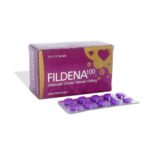The global white inorganic pigments market size is estimated at USD 22.7 billion in 2021 and is projected to reach USD 29.5 billion by 2026, at a CAGR of 5.4%, between 2021 and 2026. White inorganic pigments are opaque pigments used to provide opacity and lighten other colors are examples of inorganic pigments. Titanium dioxide is the most prominent member of the group. Calcium carbonate, calcium sulphate, diatomaceous silica (marine creature remnants), and china clays are all members of this category. Paints with white extender pigments are used to cut costs and improve the qualities of the paint. High light scattering power, a high degree of hiding power, good tinting strength, a high degree of brightness, a negligible undertone (ideally none), and a high degree of whiteness are all required from white inorganic pigments. The light scattering power is the most significant attribute, which is determined by the refractive index, particle size and distribution, and paint vehicle dispersion. pigments used to provide opacity and lighten other colours are examples of inorganic pigments.
The key players in the white inorganic pigments market Venator Materials PLC (UK), The Chemours Company (US), Tronox Holdings plc (US), LANXESS (Germany), Kronos Worldwide, Inc. (US). The white inorganic pigments market report analyzes the key growth strategies adopted by the leading market players, between 2017 and 2021, which include expansions, mergers & acquisition, new product developments/launch, and collaborations.



0 Comments